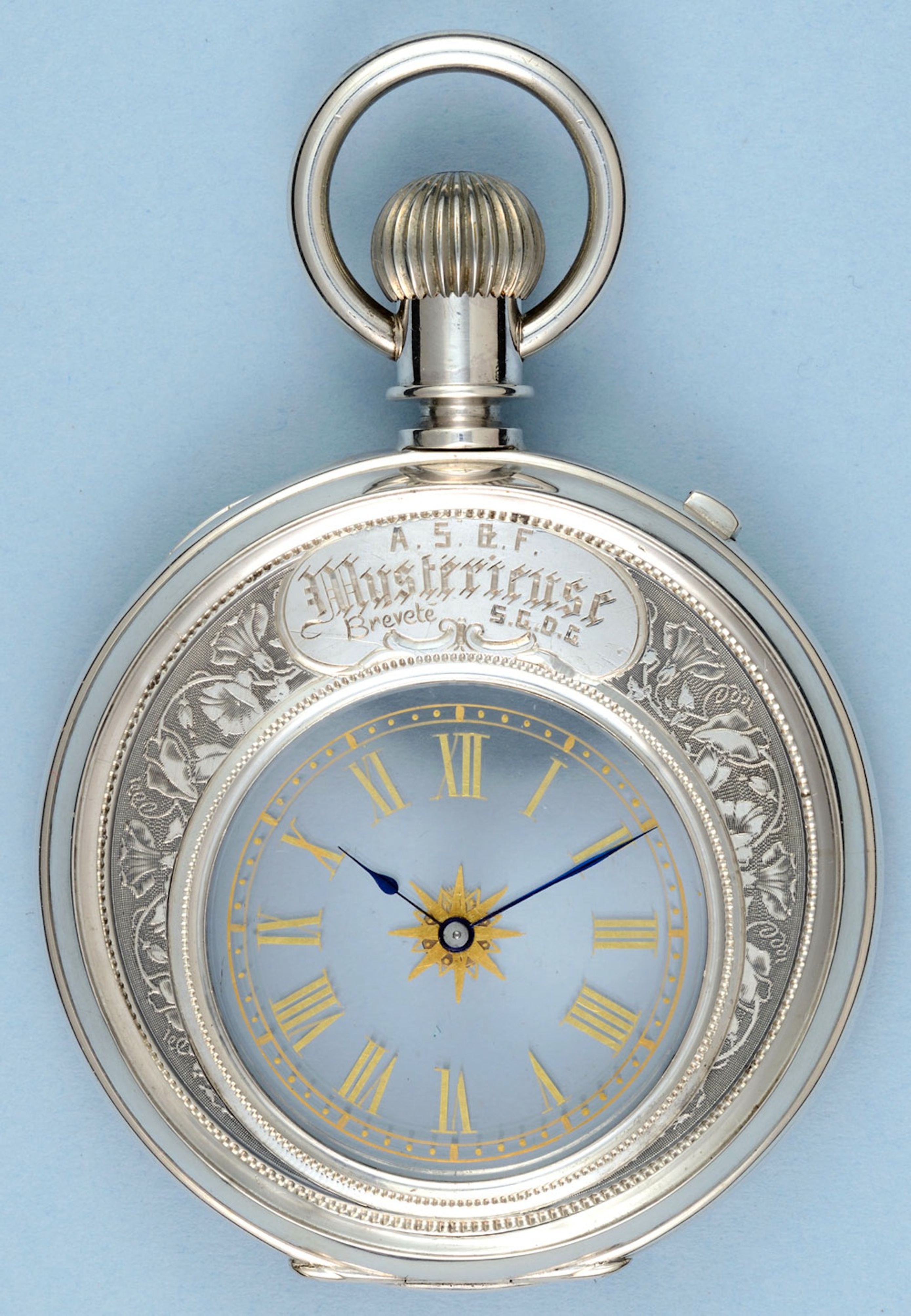Mystery watch on:
[Wikipedia]
[Google]
[Amazon]
 A mystery
A mystery
Article published in Antiquarian Horology on the first transparent watch
Video of the first transparent watch at the National Watch & Clock Museum, USA
* ttp://nawcc.pastperfectonline.com/webobject/BFCA37A3-413D-4ABF-8519-305097995100 Record of the first transparent watch at the NWCM
Hamilton Mystery watch, early 1960s
Watches Clocks
 A mystery
A mystery watch
A watch is a portable timepiece intended to be carried or worn by a person. It is designed to keep a consistent movement despite the motions caused by the person's activities. A wristwatch is designed to be worn around the wrist, attached by ...
(same applies for mystery clock) is a generic term used in horology to describe a timepiece whose working is not easily deducible, because it seems to have no movement
Movement may refer to:
Common uses
* Movement (clockwork), the internal mechanism of a timepiece
* Motion, commonly referred to as movement
Arts, entertainment, and media
Literature
* "Movement" (short story), a short story by Nancy Fu ...
at all, or the hands do not seem to be connected to any movement, etc.
One example is a type of mechanical watch
A mechanical watch is a watch that uses a clockwork mechanism to measure the passage of time, as opposed to quartz watches which function using the vibration modes of a piezoelectric quartz tuning fork, or radio watches, which are quartz watches ...
where the movement is transmitted to the hands through a transparent crystal toothed wheel.
The first see-through watch, known in French
French (french: français(e), link=no) may refer to:
* Something of, from, or related to France
** French language, which originated in France, and its various dialects and accents
** French people, a nation and ethnic group identified with Franc ...
as ("mysterious watch"), was invented by Hugues Rime, marketed by the French firm Armand Schwob et frère, and made in Switzerland. As an item of historical/horological value, it is preserved in various museum collections, such as the British Museum
The British Museum is a public museum dedicated to human history, art and culture located in the Bloomsbury area of London. Its permanent collection of eight million works is among the largest and most comprehensive in existence. It docum ...
, the German Clock Museum, the International Museum of Horology
The International Museum of Horology, french: Musée international d'horlogerie, italic=no, is a horological museum in La Chaux-de-Fonds, Switzerland. It is owned and operated by the city of La Chaux-de-Fonds.
History
In 1865 the Watchmaking S ...
, the Musée d'Horlogerie of Le Locle (Switzerland), the Musée d'art et d'histoire de Neuchâtel, the U.S. National Watch and Clock Museum
The National Watch and Clock Museum (NWCM), located in Columbia, Pennsylvania, is one of a very few museums in the United States dedicated solely to horology, which is the history, science and art of timekeeping and timekeepers.
Like its subsidiar ...
, and the Vienna Clock and Watch Museum.
See also
* List of watch manufacturers *Dollar watch
A dollar watch was a pocket watch or later, a wristwatch, that sold for about one US dollar.
History of development
Attempts to make a watch that could be sold for as little as a dollar began in the 1870s. By 1880, the Waterbury Watch Company, ...
References
{{Reflist, 30emExternal links
Article published in Antiquarian Horology on the first transparent watch
Video of the first transparent watch at the National Watch & Clock Museum, USA
* ttp://nawcc.pastperfectonline.com/webobject/BFCA37A3-413D-4ABF-8519-305097995100 Record of the first transparent watch at the NWCM
Hamilton Mystery watch, early 1960s
Watches Clocks